Bramayugam Is Proof Mammootty's Most Beautiful Moment Is Yet To Come
The director Fazil once said: 'No one knows Mammootty’s shortcomings better than himself. Now of course, he has conquered all his failings and there is nothing he can’t do.' Prescient words indeed.

Last Updated: 07.42 PM, Feb 27, 2024
This column was originally published as part of our newsletter The Daily Show on February 27, 2024. Subscribe here. (We're awesome about not spamming your inbox!)
***
ON 25 February, as I was writing this piece, Mammootty’s monochrome period drama, Bramayugam (dir. Rahul Sivadasan) had earned Rs 50 crore at the box office. Social media was abuzz with reels featuring the actor’s recent rich tapestry of celluloid characters. Incidentally, Bramayugam is Mammootty's third film to enter the 50-crore club in a span of three years.
Bramayugam takes us back to 17th-century Kerala, into the dreary interiors of a large, rambling old bungalow where an elderly man and his cook live. When a young man, lost and hungry, finds himself at the doorstep of this home, it takes him a while to realise that he has walked into a goblin’s conniving trap. In this fable that has allegorical layers hinting at power structures and caste oppression, Mammootty’s Koduman Potti is the diabolical tour de force. He is a devil who has possessed the body of a Brahmin sent to rein him in.
Potti is already power-drunk, relishing his autocracy, as he torments the two hapless men at his mercy. When you first meet Potti, he is kind and pleasant, offering shelter and food in exchange for a few musical sessions. But then as the story progresses, this old figure, with his ugly stained teeth, and moronic bouts of laughter, wearing a mundu and a half-cloth flung over his shoulder, starts to befuddle you with his sudden mood shifts.
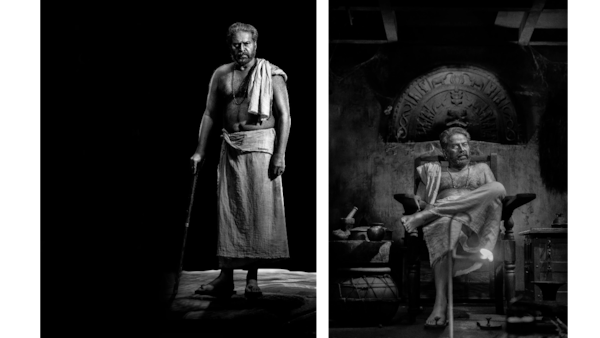
As Mammootty slips into the psyche of this delirious goblin, not only does the “matinee idol” in him cease to exist, but also the actor shows us a side to his craft we haven’t seen before. Every minute detail that has been crafted to create this “creature” is original, including adding fresh inflections to the baritone, or the tonalities to the laughter, the micro expressions that flit across the face, or the body language that encapsulates Potti’s hellishness. How does an actor and superstar, who first faced the camera nearly four decades ago, has a staggering filmography of 400-odd films, is commendably co-existing with his superstar son in the same industry, and is almost at the tail-end of his career, persist in giving newer dimensions to his craft?
For Mammootty, who turns 73 this year, though it’s widely “disseminated” that this sudden shift in artistic focus occurred after the pandemic struck, nothing could be farther from the truth. From his debut until the present, he has consistently fought against all odds during every decade of his career. Mammootty has fallen, been severely bruised and ridiculed, only to rise and triumph. Being pitted against a natural talent like Mohanlal who always weighed more favourably on the popularity scale, Mammootty had to strive twice as hard to retain his fiefdom.
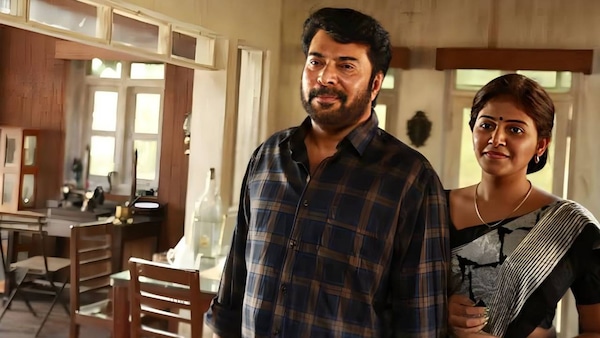
“When Mammootty started, he had just one or two tricks up his sleeve, while Mohanlal had seven or eight," filmmaker Fazil mused in an old interview. "Whatever you see today has been created by the actor. Then and now he only had one entity before him and that was himself. No one knows Mammootty’s shortcomings better than the actor (himself). Now of course he has conquered all his failings and there is nothing he can’t do.”
Meanwhile, film critic Sowmya Rajendran observes that Mammootty is “redefining the mainstream". "I think his impact as a producer championing young directors should also be highlighted," Rajendran notes. "In Tamil, when young directors work with superstars, the tendency has been to make fanboy tributes, but in Malayalam, these directors can value the actor in the star. That confidence, I'm sure, also comes with Mammootty's support for such ventures.”
At every juncture in his career, be it the '80s, '90s, 2000s to now, the superstar has had to face a barrage of criticism. During the initial stages of his career, though he had raw talent, Mammootty was awkward, struggling with his gestures, and deploying an affected style of dialogue delivery. In KG George’s Lekhayude Maranam Oru Flashback (1982), in which Mammootty plays the hero of a meta film within the narrative, the latter is seen mimicking actor Sukumaran’s dialogue delivery and has evidently not developed an individual style yet.

Ironically, in 1981, Mammootty had got his first breakthrough role in the same filmmaker’s Yavanika, in which he played a cop. The jealous, temperamental Captain Thomas in Koodevide was also one of the earlier instances that showcased his range. Of course, in hindsight, when you witness the spectrum of intensive roles the actor perfected later on, Thomas can still be counted as borderline amateurish. There were occasional flashes of brilliance (Yatra, Kanamarayathu, Nirakkoottu, Anubandham, Kathodu Kathoram, Pranamam, Arapatta Kettiya Gramathil, Avanazhi) even in those pre-superstardom phases.
New Delhi (1987) wasn’t just the resurrection of the actor and his facilitation into stardom, but Mammootty also consciously tried to bridge the gap between mainstream and offbeat cinema. Not surprisingly his collaborations with Adoor Gopalakrishnan (Anantharam, Mathilukal, Vidheyan) and TV Chandran (Ponthan Mada, Danny) bore fruit, bringing in accolades at the national level.
Between the late '80s and now, Mammootty has had to wade through spectacular highs and lows, with critics casting aspersions on his “versatility”, and his inability to pull off comedy or stunts like his counterpart. Even when emotional scenes were plugged as his biggest strength, there were snide remarks about their disproportionately loud meter. Over time, the actor has acknowledged the cracks in his craft and mended them. That’s why in Unda, Peranbu and Kaathal, he can give us a masterclass on subtlety.
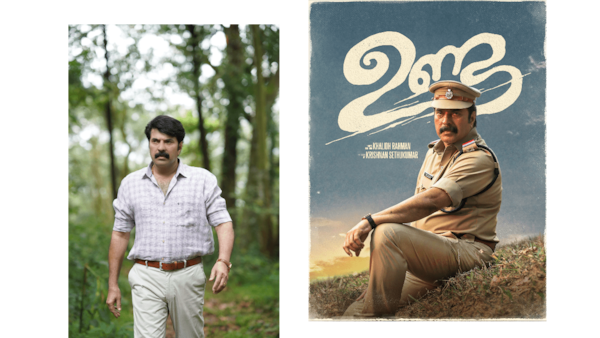
In Kaathal he also silences another set of critics for containing his talent as a “voice artist”. Mathew mostly converses through silence, and it is loudly articulated. There is a reason why the calm CBI officer Sethuramaiyyer walks with his hands clasped behind his back in Oru CBI Diary Kurippu. That was the actor carefully regulating his forearm moments when he came under the scanner for over-gesticulating in some of his earlier films. Similarly, Rajamanikyam (2007) was his response to those who felt comedy wasn’t his territory. Not only did he easily pull off the loud and gaudy buffalo seller, but also added his signature to it. Rajamanikyam spoke in chaste Thiruvananthapuram slang... grappling with local dialects is a skill Mammootty has perfected over the years and what makes it unique is the consistency he achieves, even in scenes packed with pathos.
Until recently, since age hadn’t been on his side, Mammootty had been the safest bet for portraying real-life characters/period heroes (Dr Babasaheb Ambedkar, Kerala Varma Pazhassiraja, Vaikom Muhammed Basheer, folk hero Chandu) as it aligns with his classic style. He has had colossally bad stretches when he has been called out for his poor choice of scripts (2011 to 2018) and refusing to play his age. Yet what has remained unprecedented has been his thirst to experiment (even during those terrible patches he did come up with periodic gems).
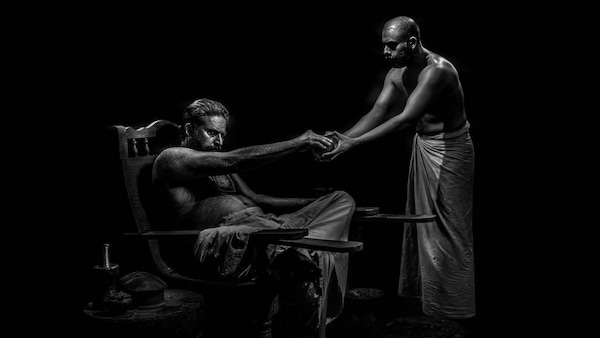
Why does the superstar actor continue to be relevant? Apart from his consistent growth as an actor that’s written all over his four-decade-long filmography, Mammootty has always tried to re-invent himself. The refurbishing isn’t confined to identifying and addressing flaws in his craft but extends to scouting for newer talents (filmmakers, technicians, technology) and make himself accessible to them. In the last decade, when Malayalam cinema was poised for a much-needed shift in terms of narrative devices, milieu and cinematic grammar, Mammootty put himself out there, ready to be experimented with.
It is also remarkable that he has (consciously or otherwise) subverted his own superstar alpha male projections for which he has been criticised — Unda’s cop is a far cry from some of his celebrated hypermasculine cops; Puzhu’s Kuttan caricatured his previous upper caste heroes; Peranbu’s Amudhavan marries a transgender person; and then the biggest of them all... Kaathal’s Mathew, a gay man trapped in a heterosexual marriage.
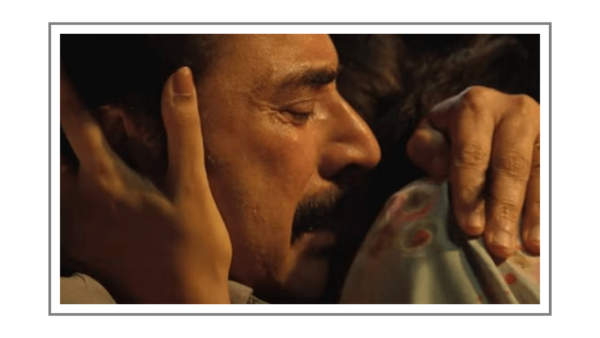
Mammootty's Kaathal act is perhaps the greatest disruptor from an Indian superstar to date. That too from a macho hero who has often been a catalyst in the perpetuation of toxic alpha male protagonists on screen. Kaathal’s box office success also proves that Mammootty was more than perspective when he made this choice. At least to a tiny extent, Mammootty has helped the process of normalising homosexuality in society, if the reaction to his portrayal is anything to go by.
His production house, Mammootty Kampany, has gained credibility for its quality films within a short span of time. The man himself is showing no signs of slowing down, unlike his contemporaries. Mohanlal, despite having the advantage of talent, age and an overwhelming fanbase by his side, has been dormant for the last few years, preferring to operate within his comfort zone, and showing an alarming resistance to teaming up with a new generation of technicians. At this moment in time, it might not be an exaggeration to say that Mammootty’s best is yet to come.

 Premium
Premium